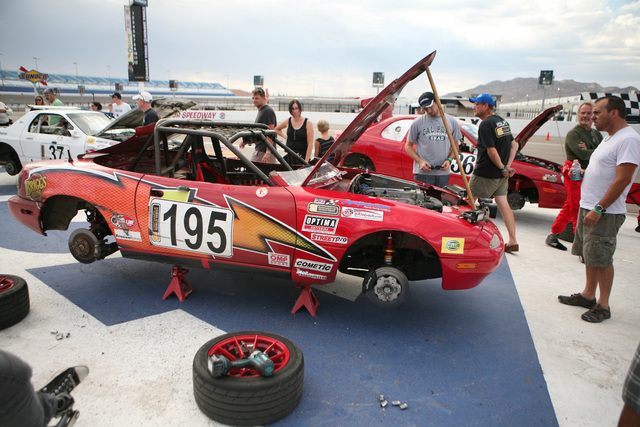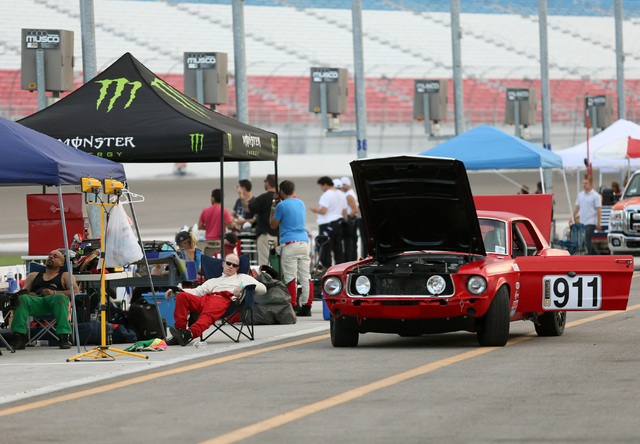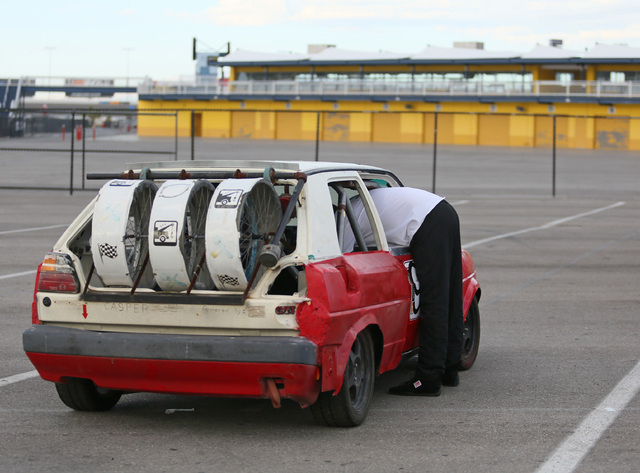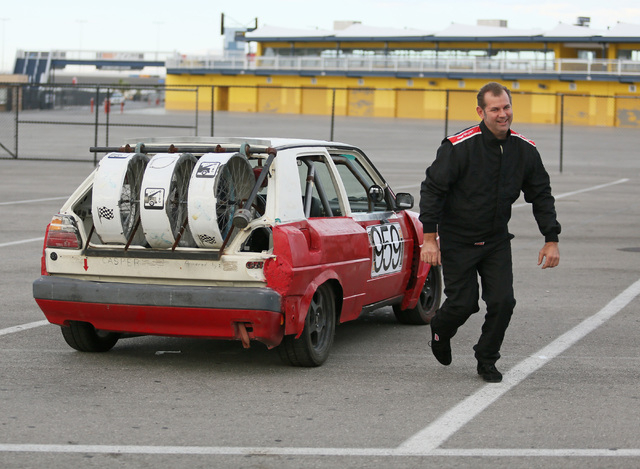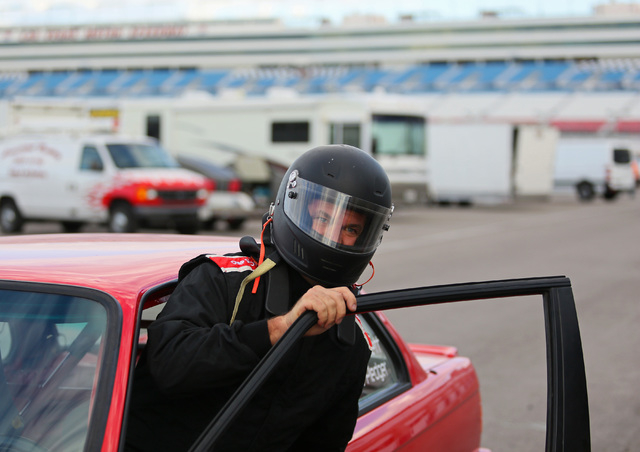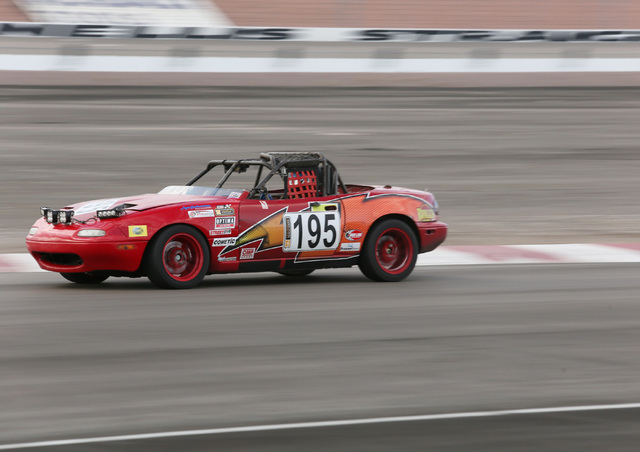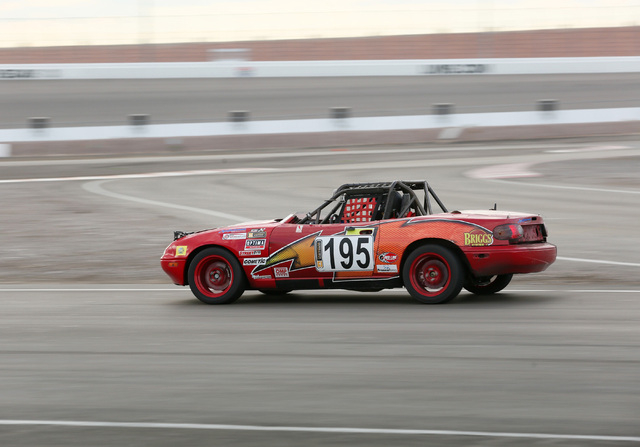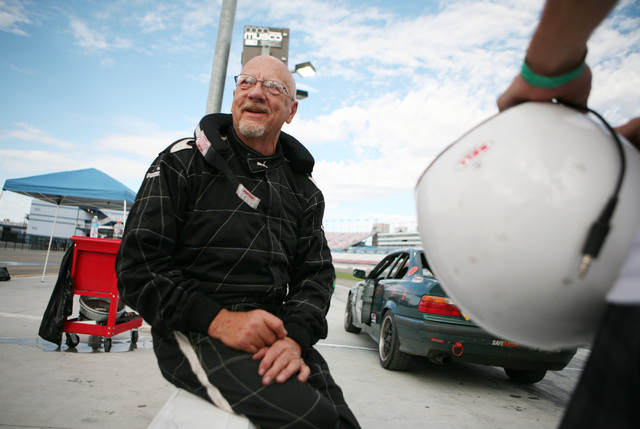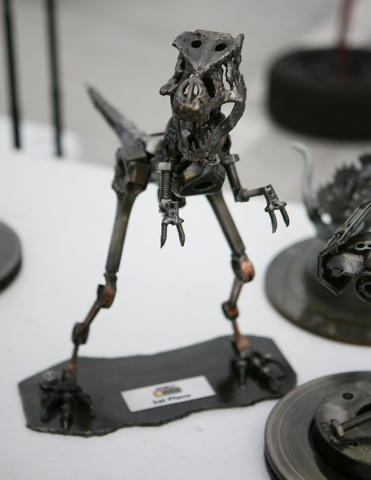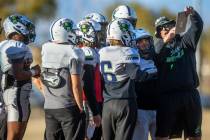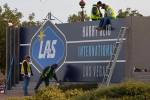How cool is a $500 car? Ask one of these Chumps
Before it merged with another series to form IndyCar, the Champ Car World Series featured the fastest race cars on the planet. Cars that cost hundreds of thousands of dollars to research and develop, to test and race.
The Chump Car World Series, which made its Las Vegas Motor Speedway debut in a sundown-to-sunup race that concluded Sunday morning, features cars that cost hundreds of dollars.
But not more than $500.
If the Indy 500 is the ultimate test of man and machine, the 13 Hours of Las Vegas was the ultimate test of man, machine and a limited budget.
The cars in this grassiest of grassroots racing series must, by rule, not cost more than $500 on Craig’s List, the general market, or parked out front of a Sinclair station. If the Blue Book says your car is worth is $501, you’ll have to take it to Islip, N.Y, for the big demolition derby or leave it on the curb and hope somebody steals it.
You cannot spend money to make a Chump Car faster, only safer.
As it says on the crew shirts: Real racing. Real tracks. Real cheap cars.
Some of the 24 cars that took the green flag looked like legitimate race cars, with legitimate race car liveries.
Others did not.
One had a mohawk.
The Las Vegas entry had these giant slot machine reels made from old bicycle rims protruding from its hatchback.
A dustup occurred when the trailer on which the car — a 1985 Volkswagen GTI in its previous and long ago iteration — was riding got a flat tire. The slot car was unloaded from the trailer and driven the short distance back to the race shop, because what could possibly go wrong?
Nobody accounted for the flashing red lights.
The authorities said there are ordinances about driving a car with giant slot machine reels hanging out the back on city streets, even for a short distance. Also, these particular authorities had not heard of the Chump Car World Series.
Eventually, both sides agreed to agree that the minor disagreement never happened.
“Apparently, a friend of a friend of a friend knew O.J. Simpson’s lawyer,” said Cathy McCause Fuss, the Chump Car race director.
This was after she explained the meatball flag — black with a big orange “meatball” in the middle — during the drivers meeting. The meatball flag is shown to drivers who drag car parts around the track. I’m told this flag gets displayed a lot in Chump Car.
Chris Willett, one of the drivers of the slot machine car, said the part of the story about O.J.’s lawyer was true. The other parts were open for interpretation.
“Our lawyer is Gabe Grasso; he’s O.J.’s old lawyer,” said Willett, who operates Sin City BMW, a BMW service center. Willett drives a BMW 550i series sedan when he’s not behind the wheel — or pounding on it — of a Chump Car.
The Chump Car World Series is “the most fun you can have with your clothes on,” Willett says.
The fun lasted only three laps before the engine in the slot machine car dumped its oil and lined up tow truck symbols on its reels.
Fourteen cars with a Blue Book value of $500 (or less) still were running after 13 hours. The car with the mohawk was not among them.
The cars with the toilet decals, which once were 1993 BMW 325i’s, completed 264 and 238 laps, respectively.
Upon removing his helmet, it was apparent the driver of the dark green Turdmeister Racing Group entry was older than the other drivers.
The unsinkable Larry Roesner, a former power boat racer, is 77.
He drove the final segment as the sun was trying to break through the clouds. He tried to drive one of the night segments, too, but he couldn’t see that well. It had nothing to do with the mohawk car. It had a lot to do with him being 77, and the lights at the speedway not being turned on.
Had he stayed out, they might have had to use the meatball flag on the dark green Beemer, which, I was told, was purchased at Hollywood and Vine in Los Angeles for $500 from a lady of the evening who was strapped for cash.
No, she couldn’t produce the title. She did, however, show a little leg.
The winning car, a modified 1991 Mazda Miata driven by Californians Bob Briggs, his son Bo, Rico Apolinar and Paul Bonaccorsi, completed 326 laps. The red Miata spotted the other cars a nine-lap head start because of modifications that didn’t conform to the rules and the $500 sticker price.
Briggs is a 58-year-old triathlete who built the stadium off-road buggies in which NASCAR champion Jimmie Johnson cut his racing teeth. He had never driven on a high-banked oval (and its infield road course) before taking the wheel at 1 o’clock Sunday morning.
When the checkered flag fell after 13 hours, Bob Briggs still looked like a kid in a very fast candy store.
His team went 326 laps without being shown the meatball flag.
He took off his helmet, took a sip of something cold. You could tell from his expression and the way he used hand gestures to show how the Miata was handling through the turns that it was worth staying up late for.
Las Vegas Review-Journal sports columnist Ron Kantowski can be reached at rkantowski@reviewjournal.com or 702-383-0352. Follow him on Twitter: @ronkantowski.



